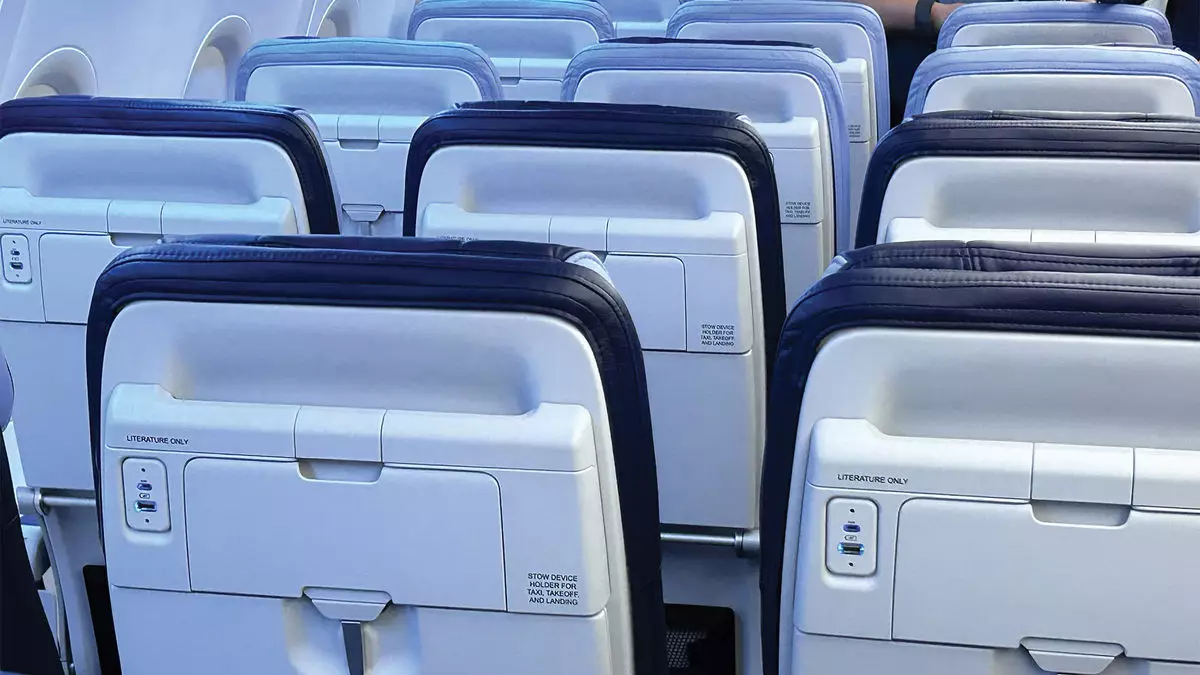The landscape of air travel is undergoing significant transformations, and Southwest Airlines is seemingly stepping boldly into this new frontier. This shift is not merely about adding extra legroom but is indicative of how the airline industry, especially low-cost carriers, is evolving in response to customer demands for comfort and convenience. As Southwest plans to reconfigure its aircraft with extra legroom, a crucial examination of its strategy, execution, and market position reveals both a promising future and challenges that may accompany these changes.
Beginning in early 2024, travelers will witness the gradual integration of aircraft featuring extra legroom seats across Southwest’s fleet. However, these seats will not be available for purchase as a distinct product until 2026, leaving passengers curious yet uncertain about the benefits and pricing structures. Southwest’s CEO Bob Jordan has emphasized the challenge of initiating this cultural shift from their long-standing open seating arrangement—an approach that has defined the airline for over five decades. The looming question is whether Southwest can successfully transition while maintaining its reputation for value and ease of travel.
The Push for Assigning Seats Raises Eyebrows
Elliott Investment Management, a significant stakeholder with an 11% ownership, has expressed dissatisfaction with the pace of Southwest’s initiatives, notably the rollout of assigned seating and premium products. They assert that the company should be able to implement these changes more rapidly, especially when compared to rivals who have adopted similar features in shorter timeframes. This internal pressure has thrown a spotlight on Jordan’s leadership capabilities and vision, creating a sense of urgency within the airline to accelerate its plans. A proxy vote targeting Jordan’s position suggests growing discontent among investors; it adds complexity to an already ambitious project.
The Technical Hurdle: A Massive Undertaking
Transitioning to a new seating configuration is not merely a matter of rearranging seats. Southwest faces the daunting task of adapting over 60 technological platforms to facilitate the selling of assigned seats alongside its traditional open seating. This monumental endeavor emphasizes the risk of implementing changes in a piecemeal fashion. Both Jordan and Ryan Green, the executive vice president of transformation, have acknowledged the perils of a flawed rollout. Their commitment to ensuring a flawless transition indicates a calculated approach to change management, but it remains to be seen how effectively they can execute this vision amidst external pressures.
If implemented successfully, Southwest’s reconfigured 737 Max 8 will feature 68 extra-legroom seats, boasting a 34-inch pitch—three inches more than standard seats. The reconfiguration process not only alters the physical space but also changes how Southwest approaches pricing and marketing. They plan to segment the plane into four distinct areas, where pricing will vary based on location within the aircraft. This nuanced strategy indicates a sharper focus on revenue management and customer segmentation, a tactic that could enhance overall passenger experience if executed thoughtfully.
One prominent element of the new strategy involves the differentiation in fare categories. The Wanna Get Away fare will remain competitive while limiting seat assignments for the lowest tier, creating an opportunity for upselling. Customers seeking comfort will have the option to add seat assignments for an additional fee. Meanwhile, fare categories like Anytime and Business Select will incorporate a richer set of benefits, potentially including extra legroom. This multifaceted approach is designed to cater to diverse customer preferences but could complicate the purchasing process for less savvy travelers.
In addition to seating changes, Southwest is also focusing on long-term partnerships, like its reestablished alliance with Icelandair. This endeavor reflects a broader strategy aimed at generating an incremental $4 billion in revenues annually by 2027. Collaborations of this nature highlight Southwest’s intention to diversify its market offerings and expand its reach beyond traditional boundaries.
As Southwest Airlines prepares to navigate this pivotal transition, it stands at a crossroads between tradition and innovation. The challenge lies in balancing the expectations of its loyal customer base with the need to enhance revenue streams and improve overall passenger experience. While the addition of extra-legroom seats is a step in the right direction, success will depend on how well the airline executes its plans and addresses stakeholders’ concerns. As the journey unfolds, Southwest Airlines will be closely watched, not just by passengers but by industry competitors and investors alike. The coming years will undoubtedly define whether this bold new strategy will elevate Southwest to new heights or expose lingering vulnerabilities.

